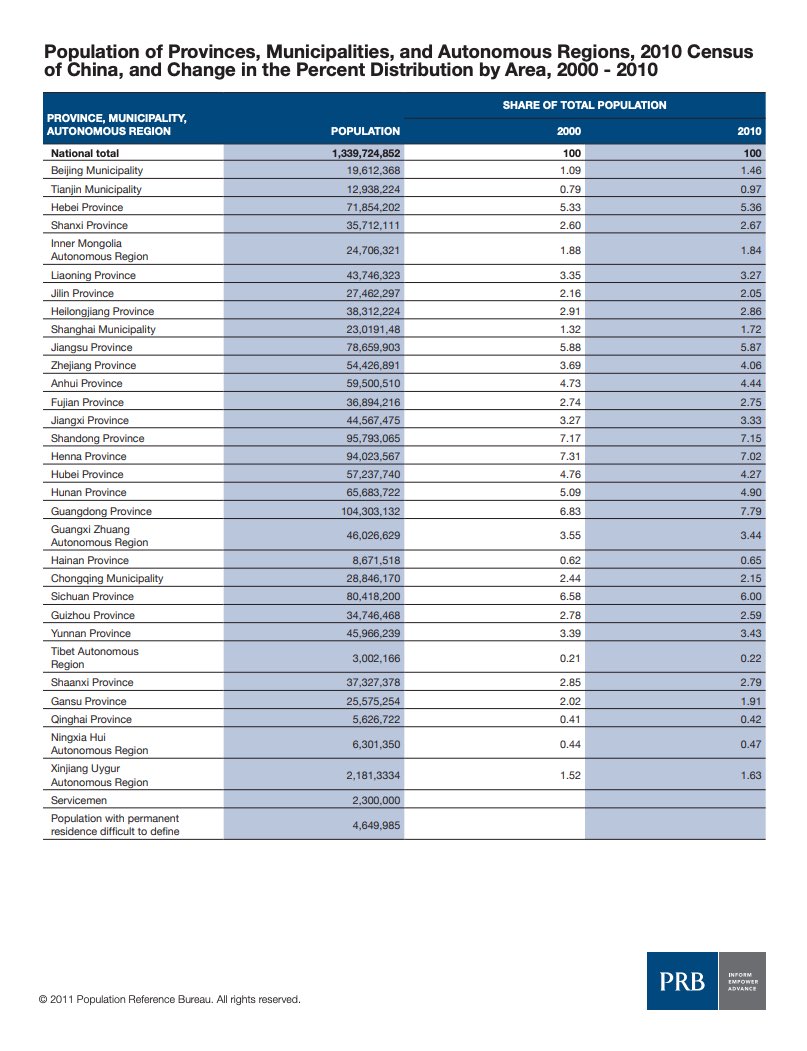China Releases First 2010 Census Results
(2011) China, the world's only other "demographic billionaire," along with India, released the results of its Nov. 1, 2010 Census on April 28.

(2011) China, the world's only other "demographic billionaire," along with India, released the results of its Nov. 1, 2010 Census on April 28.
(2003) Since gaige kaifang or "reform and opening" began in 1979, China has moved to integrate itself into the global economic system, attracting foreign investment and exporting its goods to the world. For this country of 1.3 billion people, economic integration has also required unprecedented mobility of its people and exposure to travelers from other countries.

Project: American Community Survey and Decennial Census Support Services
(2014) Countries around the world are paying more attention to inequality as an indicator of social and economic well-being.

(2014) Countries around the world are paying more attention to inequality as an indicator of social and economic well-being.
(2011) Many studies have recommended integrating reproductive health and HIV services because sexually active individuals have overlapping needs: They are at risk of both unintended pregnancies and HIV infection. A 2009 World Health Organization review of the studies on this issue found that integrating family planning and HIV services leads to higher-quality and better-used services and is cost-effective.

What do data tell us about the people who live in Gaza and the West Bank?
(2007) States increasingly consider science and technology resources to be an asset in developing a strong economic advantage. As a result, strategies for training, attracting and retaining scientists and engineers have become more important state and national public policy issues.
(2009) Over the last several decades, many industries have experienced significant structural changes that have affected their employees.

Project: American Community Survey and Decennial Census Support Services
The addition of a citizenship question to the 2020 Census may put almost one in 10 U.S. households and nearly 45 million people at greater risk of not being counted―the question has been shown to reduce response rates. Undercount risk is particularly high among young children.